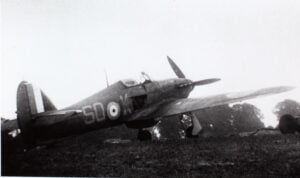Divers Discover the B-24 Tulsamerican, a Lost WWII Aircraft After 66 Years

Deep Sea Relics / YouTube
When divers first reached a broken aircraft resting 140 feet beneath the Adriatic Sea, they expected only another wartime wreck. Instead, they uncovered a bomber with a history unlike any other. The B-24 known as the Tulsamerican had carried the handwritten signatures of the people who built it, flown more than 150 combat missions, and vanished in 1944 with three men still inside. Its rediscovery in 2010 finally revealed details that had been hidden for decades.
Discovery Beneath the Adriatic
In 2010, specialists from the Croatian Conservation Institute conducted underwater surveys near the island of Vis. Their equipment detected a large metallic shape on the seafloor, and divers soon confirmed it was a B-24 Liberator. The bomber’s wings, spread across the bottom, showed the aircraft had settled mostly intact despite the force of its impact. As marine growth was carefully removed from a metal plate, a serial number appeared: 42-51430. This was the Tulsamerican.
Near the cockpit, divers noticed something unusual. A parachute canopy remained pinned beneath a propeller blade. Its fabric, though worn, had protected what was trapped beneath it since the day the aircraft went down. This discovery immediately raised new questions about who might still be inside and whether identification would be possible after so many years underwater.

A Bomber Built by Its Community
To understand why this aircraft mattered so deeply, historians looked back at its construction. Built in July 1944 at the Douglas plant in Tulsa, Oklahoma, the Tulsamerican was funded through war bonds purchased by factory workers and local residents. Many of those workers signed their names on interior and exterior panels before the aircraft left the line. These signatures remained visible in sheltered areas of the wreck, preserved by cold water and low oxygen levels.
The Tulsamerican was a B-24J, powered by four engines and armed with ten .50-caliber machine guns. Its ball turret, mounted on the belly, was vital for defense from below. By December 1944, the aircraft had already flown 150 combat missions with the 765th Bomb Squadron while operating from bases in Italy.
The Final Mission
On December 17, 1944, the Tulsamerican joined a mission to strike oil refineries near the Polish border. Crews were instructed to keep their ball turrets retracted unless attacked to conserve fuel for the long flight. Unknown to Allied planners, German fighters had moved into the area and expected the American bombers to fly with these defenses raised.
As the formation neared the target, fighters attacked from beneath. Shells tore through the fuselage, setting an engine on fire and causing severe fuel loss. Captain Eugene Ford released the bombs early and turned toward Italy, but the bomber was too damaged to make the full return. Over Hungary, anti-aircraft fire caused still more destruction. Ford decided to attempt a controlled ditching near Vis, the closest Allied-held territory.
The landing on the Adriatic Sea was violent. Seven crew members escaped into the water and were rescued hours later. Three did not survive: Captain Eugene Ford, navigator Russell Landry, and flight engineer Charles Priest. Their bodies sank with the aircraft and were listed among the many missing service members from the war.

A Recovery Decades Later
In 2017, after the site had been declared a protected historic monument, an international recovery team began an operation supported by the Croatian Navy. Divers worked within strict time limits due to depth, documenting the wreck and conducting careful excavations. Beneath the parachute near the cockpit, they found human remains that had been shielded from currents since 1944. DNA testing later confirmed they belonged to Captain Ford.
In 2018, Ford was buried at Arlington National Cemetery. His daughter, who had grown up without a grave to visit, finally received the chance to say goodbye. The Tulsamerican remains protected where it lies, with two crew members still at rest inside an aircraft marked by the signatures of the people who built it.
Keep going for the video below:




















